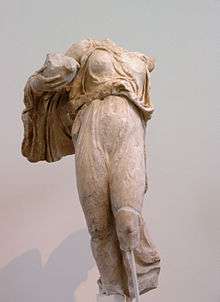Temple of Asclepius, Epidaurus
Asclepius (also Asklepios, or Asclepios) was a much-worshiped ancient Greek god of health and well-being, and his sanctuary at Epidaurus was, in extent, the rival of such major cult sites as the Sanctuary of Zeus at Olympia and Apollo at Delphi. Its major temple to the healing god, the Temple of Asclepius at Epidaurus, was built in the early fourth century BCE.
The temple was Doric, six columns by eleven, measuring ca. 80 feet in length. It is preserved in foundations only. Fragments of the upper structure, recovered in excavation, are in the archaeological museum at the site. The gold and ivory cult statue of the god is described by Pausanias (2.27.2). The temple had pedimental sculpture, front and back, and figural acroteria. These, the work of master sculptors of the period, occupy a prominent room in the National Archaeological Museum at Athens.

An inscription excavated near the temple (Inscriptiones Graecae IV, 2nd ed., no. 102) gives a public record of the temple’s construction. The inscription names Theodotus as architect. The project took nearly five years to complete.
Bibliography
- Helmut Berve, Gottfried Gruben and Max Hirmer. Greek Temples, Theatres, and Shrines. New York 1963.
- Alison Burford, Greek Temple Builders at Epidauros: A Social and Economic Study of Building in the Asklepian Sanctuary During the Fourth and Early Third Centuries B.C. Liverpool 1969.
- William Bell Dinsmoor. The Architecture of Ancient Greece. 3rd ed. rev. London 1950.
- Arnold W. Lawrence. Greek Architecture. 4th ed. rev. with additions by R.A. Tomlinson. (Pelican History of Art) New Haven 1996.
- Bronwen L. Wickkiser. Asklepios, Medicine, and the Politics of Healing in Fifth-Century Greece: Between Craft and Cult. Baltimore 2008.
Coordinates: 37°35′55″N 23°04′28″E / 37.5986°N 23.0744°E